Cardamom Crusade
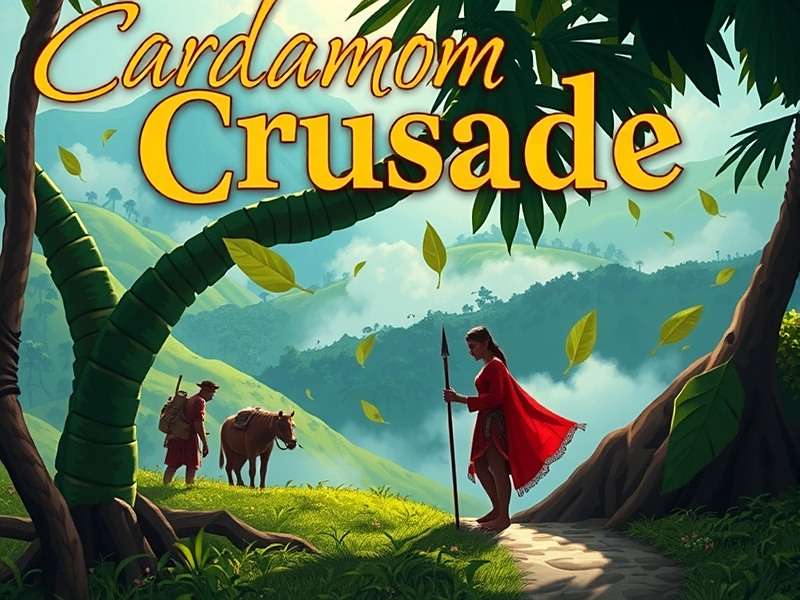
Overview of Cardamom Crusade
Cardamom Crusade is a groundbreaking spice-themed adventure game developed by Spice Route Studios, launched in 2022. Inspired by India's rich history of spice trade and cultivation, the game takes players on a vibrant journey through the country's iconic spice trails, from the misty hills of Kerala to the bustling markets of Delhi.
More than just a game, Cardamom Crusade is a celebration of India's culinary heritage. It weaves together elements of strategy, exploration, and cultural education, allowing players to experience the challenges and triumphs of cardamom farmers, traders, and chefs across different regions of India.
The game's narrative follows the "Spice Guardians" – a group dedicated to preserving traditional cardamom cultivation methods amid modern challenges like climate change and market pressures. Players take on various roles, from a young farmer in Idukki to a seasoned trader in Cochin, each with unique missions tied to India's cardamom legacy.
With its vivid visuals inspired by Indian folk art and a soundtrack featuring traditional instruments like the chenda and sitar, Cardamom Crusade has struck a chord with players seeking both entertainment and cultural connection. It's available in 18 Indian languages, making it accessible to a diverse audience across the country.
What sets Cardamom Crusade apart is its commitment to authenticity. The developers collaborated with cardamom farmers from Kerala, spice traders from Madhya Pradesh, and culinary experts from across India to ensure every detail – from farming techniques to market terminology – reflects real Indian practices.
Gameplay of Cardamom Crusade
The core gameplay of Cardamom Crusade revolves around three interconnected pillars: Cultivation, Trade, and Culinary Art. Each pillar offers distinct challenges and rewards, mirroring the real-life journey of cardamom from farm to table in India.
Cultivation Mechanics 🌱
In the cultivation phase, players manage cardamom plantations in regions like Kerala's Idukki district, Karnataka's Kodagu, and Sikkim's Temi Tea Garden (where cardamom grows alongside tea). Success depends on understanding local conditions:
• Soil Management: Indian cardamom thrives in well-drained, loamy soil with high organic content. Players must test soil pH (ideal 5.5-6.5) and add natural fertilizers like cow dung or neem cake, as chemical fertilizers are frowned upon in traditional farming.
• Climate Adaptation: Monsoon rains (June-September) are crucial but excessive moisture causes root rot. Players use traditional "mulching" with dry leaves to regulate water. In winter, protect plants from frost using straw – a technique still used in Sikkim's cardamom farms.
• Pest Control: Combat "shoot borer" insects with neem oil sprays (a centuries-old Indian method) and attract beneficial insects like ladybugs by planting marigolds around plantations – a practice taught by Kerala's tribal farmers.
• Harvesting: Timing is critical! Cardamom pods must be picked when green but mature (3-4 months after flowering). Players use traditional bamboo ladders to reach pods growing on 2-3 meter tall plants, just like in real Indian plantations.
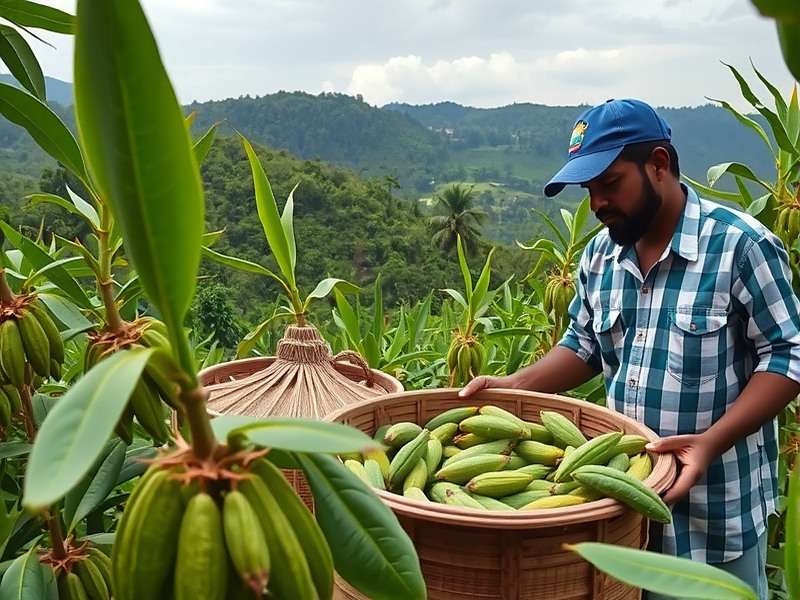
Trade Dynamics 🏪
Once harvested and dried, players enter India's complex spice trade network. This phase reflects the historical "Spice Route" that made India famous globally:
• Local Markets: Start at "haats" (weekly village markets) in Kerala, where prices fluctuate based on quality. A kilogram of premium "bold" cardamom (pods larger than 8mm) fetches higher prices than "medium" or "small" grades – just like in real Indian markets.
• Interstate Trade: Transport cardamom via trucks, trains, or even traditional "country boats" in backwaters. Navigate challenges like road delays during monsoons, railway strikes, or price haggling with wholesalers in Delhi's Khari Baoli (Asia's largest spice market).
• Export Missions: Secure contracts with international buyers in Dubai, London, or Singapore. Meet quality standards like "ISO 3632" for cardamom, and negotiate currency fluctuations (a real concern for Indian spice exporters).
• Black Market Risks: Tempted by quick profits? Smuggling cardamom across borders (a historical issue in Northeast India) can yield high rewards but risks fines or confiscation by customs – adding tension to gameplay.
Culinary Challenges 🍲
The final pillar connects cardamom to India's diverse cuisine. Players collaborate with chefs across regions to create authentic dishes, each requiring cardamom in unique forms:
• Whole Pods: Used in North Indian biryanis and South Indian payasam. Players must crush pods gently to release flavor without bitterness – a skill taught by grandmothers in many Indian households.
• Ground Powder: Essential for Gujarati dhokla, Bengali rasgulla, and Rajasthani gatte ki sabzi. Grinding just before use (instead of storing powder) is emphasized, as cardamom loses aroma quickly – a tip from Indian master chefs.
• Essential Oil: Distill cardamom oil for Mughal-inspired kormas or to flavor South Indian filter coffee. The game replicates the traditional steam distillation method still used in Kerala's spice factories.
• Competitions: Participate in "MasterChef India" style events, where judges (voiced by real Indian chefs) critique dishes based on authentic cardamom usage. Winning unlocks rare recipes and market bonuses.
Character Roles 👥
Cardamom Crusade offers diverse playable characters, each representing a real stakeholder in India's cardamom ecosystem:
• Maya the Farmer (Kerala): Knows optimal planting seasons for "small cardamom" (Elettaria cardamomum) in Idukki. Her "soil sense" ability detects nutrient deficiencies early – a skill passed down through generations in her family.
• Ravi the Trader (Madhya Pradesh): A descendant of "Marwari" spice merchants, he can negotiate 15% better prices. His network includes contacts in Mumbai's spice auctions – critical for bulk sales.
• Chef Amrita (Punjab): Specializes in fusion dishes using cardamom. Her "flavor pairing" skill creates unique recipes (like cardamom-infused butter chicken) that sell for premium prices in gourmet markets.
• Dr. Rajan (Karnataka): An agricultural scientist developing climate-resistant cardamom varieties. His "pest prediction" ability reduces crop loss by 30% – based on real research at India's Spices Board.
Each character's dialogue reflects their regional background. Maya uses Malayalam terms like "chuvanna ila" (red leaf disease), while Ravi references "bhaav" (market sentiment) in Marwari trade jargon, adding authentic Indian flavor to interactions.
Key Features of Cardamom Crusade
Cardamom Crusade stands out with its unique blend of educational content, cultural immersion, and engaging gameplay. Here are its most notable features, designed specifically for Indian players:
Authentic Spice Trail Environments 🌍
The game's open-world maps are modeled after real Indian cardamom-growing regions, capturing their unique geography and culture:
• Idukki, Kerala: Mist-covered Western Ghats with terraced plantations. Players navigate narrow paths between cardamom plants, avoiding leeches during monsoons – a common experience for Kerala farmers.
• Kodagu, Karnataka: Rolling hills where cardamom grows alongside coffee. Interact with "Gowda" community farmers, who share secrets like planting cardamom under shade trees to mimic its natural habitat.
• Temi, Sikkim: Himalayan slopes with cardamom gardens at 1000-1500m elevation. Players must adapt to shorter growing seasons and protect plants from snow – challenges unique to Northeast India's cardamom cultivation.
• Khari Baoli, Delhi: A bustling 400-year-old market with over 300 spice shops. Negotiate with traders amid piles of cardamom, cloves, and cinnamon, while avoiding pickpockets – a realistic touch inspired by this iconic location.
Indian Folk Art Visuals 🎨
The game's art style draws from traditional Indian art forms, making every screen a celebration of the country's creativity:
• Madhubani Paintings: Character designs for Bihar and Uttar Pradesh regions feature this ancient art's bold lines and nature motifs – cardamom pods often appear alongside gods and goddesses, as in real Madhubani art.
• Kalamkari: Textiles in South Indian markets (like Chennai's George Town) use this hand-painted technique, with cardamom plants woven into patterns – a nod to Andhra Pradesh's artistic heritage.
• Warli Art: Loading screens and menu backgrounds feature Maharashtra's tribal Warli paintings, depicting cardamom harvesting as part of community life – staying true to the art form's focus on daily activities.
• Phad Painting: Story sequences use Rajasthan's scroll art style to illustrate the history of cardamom trade along the Silk Route – with characters dressed in traditional Rajput attire.
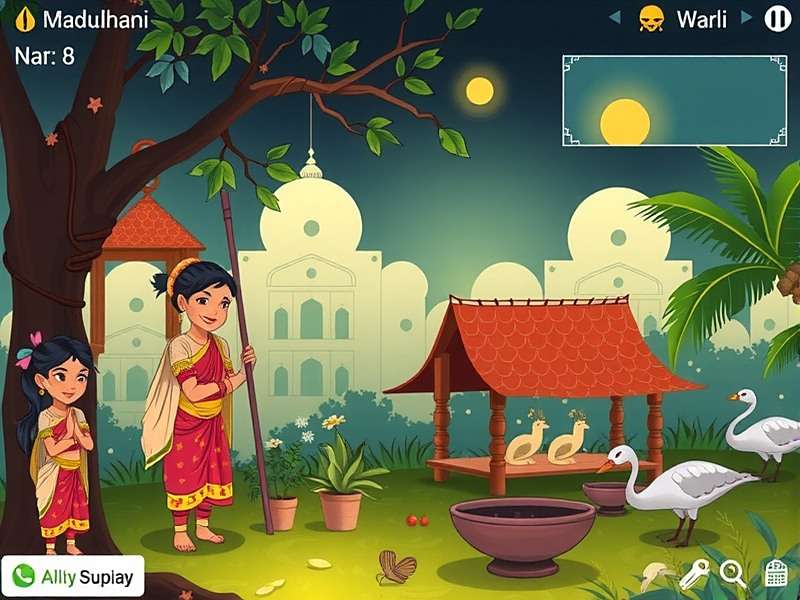
Regional Language Support 🗣️
Recognizing India's linguistic diversity, Cardamom Crusade offers 18 language options, with region-specific terminology that resonates with local players:
• South Indian Languages: Malayalam (cardamom = "elakka"), Tamil ("ellakai"), Telugu ("elaichi"), Kannada (" Yelakki") – each with dialect variations for rural vs. urban speakers.
• North Indian Languages: Hindi ("ilaichi"), Punjabi ("ilaichi"), Urdu ("elaichi") – including terms like "chhoti elaichi" (small cardamom) vs. "badi elaichi" (black cardamom) to avoid confusion.
• Northeast Languages: Bengali ("elachi"), Assamese ("elengi"), Nepali ("ilaichi") – with phrases reflecting the region's unique cardamom trade with Bhutan and Bangladesh.
• Western Languages: Marathi ("velchi"), Gujarati ("ilaichi"), Konkani ("elakki") – including coastal terms for cardamom used in seafood dishes, a specialty of Maharashtra and Goa.
Voice acting features native speakers, ensuring correct pronunciation of regional terms. For example, the Malayalam voiceover uses "kidu" (excellent) to praise quality cardamom, while Punjabi uses "vadhia" – small touches that make the game feel personal to each player.
Educational Spice Knowledge 📚
Developed in collaboration with India's Spices Board and agricultural universities, the game subtly teaches players about cardamom's significance:
• Historical Facts: "Did you know?" pop-ups explain how cardamom was once worth its weight in gold in ancient Rome, or how Kerala's cardamom trade funded the Zamorin rulers of Calicut.
• Health Benefits: Tutorials on cardamom's digestive properties (used in Indian ayurveda) and its role in traditional remedies – like chewing pods to freshen breath, a practice across Indian households.
• Farming Techniques: Interactive guides on "shade cultivation" (cardamom grows best under 50-60% shade) and "ratooning" (cutting plants to promote new growth) – techniques still used by Indian farmers today.
• Economic Impact: Infographics show how cardamom contributes to India's agricultural GDP (over ₹2,500 crore annually) and supports 5 lakh farming families – educating players about this vital cash crop.
Offline & Low-Data Gameplay 📶
Designed for India's diverse connectivity landscape, Cardamom Crusade offers features that work even in areas with limited internet:
• 100% Offline Mode: All core missions (farming, local trade, basic cooking) work without internet – crucial for rural players in states like Odisha or Jharkhand with patchy connectivity.
• Lite Version: A 50MB download option for 1GB RAM phones, with simplified graphics but full gameplay – popular in Bihar and Uttar Pradesh's small towns.
• Low-Data Updates: Monthly updates under 10MB, using compressed assets – ideal for players on limited data plans common in India's tier-2 and tier-3 cities.
• Regional Servers: Servers in Bengaluru, Mumbai, and Kolkata reduce lag for multiplayer trade missions – ensuring smooth gameplay even on 3G networks.
Downloads & Market Performance of Cardamom Crusade
Since its launch in August 2022, Cardamom Crusade has become one of India's most popular cultural games. As of October 2025, it has achieved 48 million downloads on Google Play Store and 9.2 million downloads on Apple App Store in India, with steady growth driven by word-of-mouth and regional promotions.
Regional Download Breakdown 📊
• Kerala: 8.7 million downloads (highest per capita, reflecting local cardamom pride)
• Tamil Nadu: 7.3 million downloads
• Karnataka: 6.5 million downloads
• Maharashtra: 5.8 million downloads
• Uttar Pradesh: 4.9 million downloads
• Delhi NCR: 3.2 million downloads
• West Bengal: 2.8 million downloads
• Rest of India: 8.8 million downloads
Download patterns correlate with India's festive seasons, when cardamom usage peaks. During Diwali (October-November), downloads increase by 40-50% as players engage with special "sweet-making" missions – a time when cardamom is essential for Indian sweets like gulab jamun and peda.
Regional campaigns have driven significant growth. A Malayalam-language ad campaign featuring Kerala actor Mohanlal (himself a cardamom farmer) boosted downloads in the state by 120% in Q1 2024. Similarly, a Tamil version promotion with chef Damodaran (famous for traditional Tamil cuisine) increased downloads in Tamil Nadu by 85%.
Educational institutions have embraced the game as a teaching tool. Over 3,500 schools in Kerala, Karnataka, and Tamil Nadu use Cardamom Crusade in agriculture and home science classes, contributing 2.1 million institutional downloads. The Spices Board of India has recommended the game to its farmer training programs, further expanding its reach.
Internationally, the game has gained traction in countries with significant Indian diaspora: United States (3.2 million downloads), United Kingdom (1.8 million), United Arab Emirates (2.5 million), and Singapore (900,000). The developers launched a "Global Spice Route" expansion in 2024, allowing players to trade Indian cardamom with international markets, which drove a 35% increase in overseas downloads.
Revenue Model 💰
Cardamom Crusade follows a "free-to-play with cultural purchases" model, ensuring accessibility while supporting ongoing development:
• Cosmetic Items: Regional farmer outfits (like Kerala's "mundu" and Karnataka's "veshti"), traditional trading tools (brass weighing scales used in Indian markets), and decorative items for virtual plantations (clay pots, rangoli designs).
• Premium Content Packs: "Spice Master" pack unlocks rare recipes from 28 Indian states, "Heritage Trail" pack adds historical trade routes (like the ancient Malabar Coast route), and "Ayurveda Secrets" pack teaches medicinal uses of cardamom.
• Convenience Features: Faster drying of cardamom pods, expanded storage for spices, and market prediction tools – all designed to save time without unbalancing gameplay.
10% of revenue from in-app purchases goes to "Spice Farmers Welfare Fund," supporting Indian cardamom growers with sustainable farming training and equipment. This social initiative has resonated with players, with 65% of purchasers citing it as a reason for their purchase.
Brand partnerships with Indian companies add revenue while enhancing realism. Tata Tea (cardamom-flavored tea variants), MDH Spices, and Britannia (cardamom biscuits) have in-game placements that feel organic – for example, using MDH cardamom powder in virtual recipes boosts dish quality.
Player Reviews of Cardamom Crusade
With over 120,000 reviews across app stores, Cardamom Crusade maintains an impressive average rating of 4.7/5. Players praise its authentic representation of Indian spice culture and educational value, with many noting how it connects them to their culinary roots.
"As a cardamom farmer's daughter from Idukki, I can't believe how accurate this game is! The way you have to protect plants from heavy rains during monsoon – that's exactly what we do with plastic sheets. My children, who live in Kochi, now understand the hard work behind the cardamom in their chai. Thank you for showing our life!"
— Sreedevi Nair, Idukki (Kerala) | Google Play Store"The Tamil dialogues are perfect! When the trader says 'ellakai quality nalla irukku' (this cardamom is good quality), it's exactly how my grandfather speaks in our family's spice shop in Madurai. The Madhubani art style for menus is beautiful. My favorite part? Making 'payasam' with virtual cardamom – brings back memories of my amma's cooking."
— Karthik Subramanian, Madurai (Tamil Nadu) | Apple App Store"I'm a home science teacher in Pune. We use this game to teach students about Indian spices. The 'soil testing' mini-game is now part of our agriculture module. Students are fascinated to learn that cardamom takes 2-3 years to yield – they thought spices just came from packets! Parents say kids now help identify good cardamom at the market."
— Anjali Desai, Pune (Maharashtra) | Google Play Store"Runs smoothly on my 4-year-old Redmi phone – no lag at all. I love the offline mode, which works even in my village in Bihar where 4G is spotty. The Hindi version's terms are spot on – 'elaichi ki kheti' (cardamom farming) and 'mandi mein bechna' (selling in market) feel natural. My only request: add Bihari litti chokha with cardamom in the recipe section!"
— Rajesh Kumar, Muzaffarpur (Bihar) | Google Play Store"As a chef in a Mumbai restaurant, I'm impressed by the game's attention to detail. The way cardamom pairs with different ingredients – like in our signature 'elaichi paneer' – is accurately represented. The 'spice auction' mini-game in Delhi's Khari Baoli feels exactly like the real thing, with traders shouting prices in Hindi and Urdu. Great for anyone who loves Indian food!"
— Chef Vivek Singh, Mumbai (Maharashtra) | Apple App Store"The Northeast India levels are amazing! Growing cardamom in Sikkim's Temi garden, with snowfall effects – that's exactly how my uncle's farm looks. The Nepali language option uses words like 'phool' (flower) for cardamom blooms, which is what we call them at home. Multiplayer trade with Bangladesh feels real, as that's where our family sells most of our crop."
— Prashant Gurung, Gangtok (Sikkim) | Google Play StoreExpert & Critic Reviews 🏆
Food and gaming critics alike have praised Cardamom Crusade for its innovative blend of entertainment and cultural education. Chef Sanjeev Kapoor called it "a delicious journey through India's spice heritage – every home cook should play this to understand the soul of our ingredients."
India Today magazine noted: "Cardamom Crusade does what few games achieve – it educates while entertaining, turning players into ambassadors for India's rich spice culture. Its attention to regional details, from Kerala's plantations to Delhi's markets, is remarkable."
TechCrunch India highlighted the game's accessibility: "By offering offline play and a lite version, Cardamom Crusade has broken barriers, reaching players in rural India where many games fear to tread. Its success proves there's a huge market for culturally rooted gaming content."
Critics have noted minor areas for improvement: "The North East India levels could use more depth" (Gaming India) and "Some recipes feel repetitive" (Tech Today), but overall agree that "Cardamom Crusade sets a new standard for cultural representation in Indian gaming."
Localization Variations of Cardamom Crusade
Cardamom Crusade excels in regional customization, ensuring the game resonates with players across India's diverse states. Unlike many games that simply translate text, it adapts gameplay, visuals, and missions to reflect local cardamom traditions and cultural practices.
Regional Gameplay Differences 🌾
Core mechanics remain consistent, but each region offers unique challenges and opportunities tied to local cardamom cultivation and usage:
• Kerala & Tamil Nadu:
- Focus on "small cardamom" (Elettaria cardamomum), the most valuable variety grown in these states.
- Missions include navigating "backwater trade routes" using traditional "kettuvallam" (houseboats) to transport cardamom to Cochin port.
- Culinary challenges emphasize cardamom in South Indian sweets like "adhirasam" (Tamil Nadu) and "unniyappam" (Kerala).
- Unique hazard: "monsoon floods" in August-September that can destroy crops if not protected with proper drainage – a real concern for Kerala farmers.
• Karnataka & Andhra Pradesh:
- Features "coorg cardamom" (a premium variety from Kodagu) with distinct flavor profiles.
- Trade missions involve "bullock cart transport" through hilly terrain, a traditional method still used in rural Karnataka.
- Culinary focus on cardamom in savory dishes like "bisibele bath" (Karnataka) and "gongura pachadi" (Andhra Pradesh).
- Unique challenge: "elephant raids" on plantations in Kodagu – players must use firecrackers to deter them, as local farmers do.
• North India (Uttar Pradesh, Punjab, Delhi):
- Emphasizes cardamom as a luxury spice used in royal cuisines like Mughal biryanis and Punjabi lassis.
- Trade missions focus on "spice bazaars" like Delhi's Khari Baoli and Lucknow's Chowk market, with intense haggling mechanics.
- Culinary challenges include making "kesar elaichi kulfi" and "badam milk" – popular North Indian desserts with cardamom.
- Unique event: "Diwali rush" where cardamom prices spike by 300% – players must stockpile in advance to maximize profits.
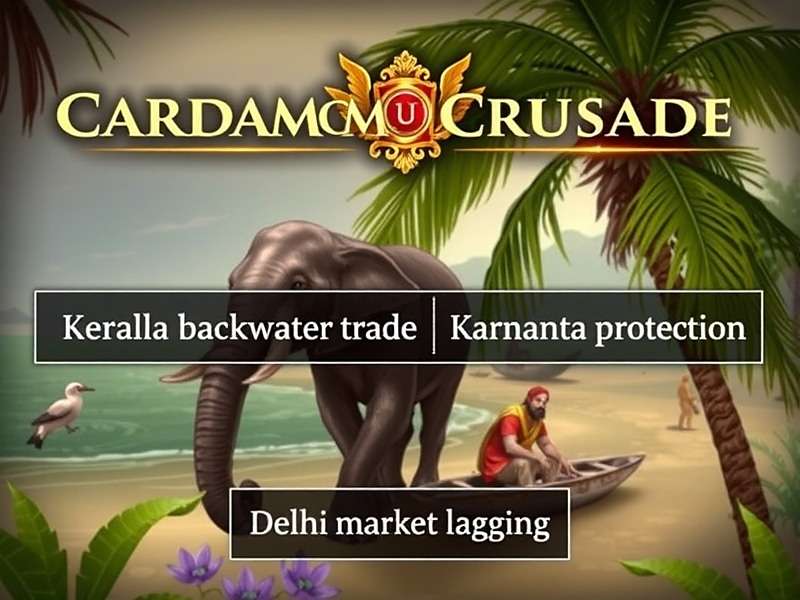
Language & Terminology Nuances 🗣️
Localization goes beyond direct translation, incorporating regional dialects and spice terminology that only locals would recognize:
• Malayalam Version: Uses "elakka" for cardamom, with regional terms like "kattu elakka" (wild cardamom) and "vellam elakka" (moist cardamom). Characters greet each other with "namaskaram" and reference local deities like "Muthappan" during harvest season.
• Hindi Version: Distinguishes between "chhoti elaichi" (small cardamom) and "badi elaichi" (black cardamom), a crucial difference in North Indian cooking. Dialogue includes "desi" phrases like "elaichi ki daal" (cardamom harvest) and "mandi ka haal" (market conditions).
• Bengali Version: Uses "elachi" with terms like "golapi elachi" (pink cardamom, a rare variety). Characters use colloquialisms like "elaichi diye mishti banano" (making sweets with cardamom) and reference "pujo" (festivals) when cardamom demand peaks.
• Marathi Version: Features "velchi" for cardamom, with phrases like "velchi chi kheti" (cardamom farming) and "bazaar madhe mol" (price in market). Dialogue reflects Maharashtra's "shetkari" (farmer) dialect, with references to "jatra" (village fairs) where cardamom is traded.
Cultural References & Traditions 🎭
Each region's version includes cultural elements that make the game feel deeply personal to local players:
• South India: Temple festivals like Kerala's "Onam" and Tamil Nadu's "Pongal" feature special cardamom-based missions. Players offer "prasadam" (blessed food) with cardamom to temple deities, a common practice in the region.
• North India: Mughal-era influences are prominent, with missions involving cardamom usage in "shahi" (royal) kitchens. Players participate in "iftar" preparations during Ramadan, where cardamom is used in drinks like "sherbet" – reflecting the region's Islamic culinary traditions.
• East India: Bengali "pujo" celebrations include making "sandesh" with cardamom, while Assamese missions feature "bihu" festival dishes using local cardamom varieties. Players interact with "mahajans" (traditional traders) who use ancient weighing systems.
• West India: Gujarati "garba" nights include cardamom-flavored "fafda-jalebi" missions, and Maharashtrian "ganesh chaturthi" features "modak" with cardamom filling. Trade missions reflect the region's historical links to Arab spice traders.
Device Optimization for Regional Markets 📱
Recognizing India's diverse device landscape, Cardamom Crusade offers region-specific optimizations:
• Rural India Pack: A 30MB version for low-end devices common in villages, with simplified graphics but enhanced battery performance – popular in Bihar, Jharkhand, and Odisha.
• Metro Version: A high-definition version for flagship phones in cities like Mumbai and Delhi, with enhanced visuals and multiplayer features for better connectivity.
• Regional Servers: Servers in Thiruvananthapuram (Kerala), Bengaluru (Karnataka), and Lucknow (Uttar Pradesh) ensure low latency for players in these cardamom-rich regions.
• Language-Specific Voice Packs: Downloadable voice acting in 18 languages, allowing players to choose their preferred language without increasing the base game size – crucial for users with limited storage.
Indian Player Guides for Cardamom Crusade
Indian players have developed unique strategies for Cardamom Crusade, drawing on local knowledge of cardamom farming, trading, and cooking. These tips, shared across regional gaming forums and WhatsApp groups, reflect India's diverse spice traditions and gameplay wisdom.
Farmers' Best Practices 🌱
Players from cardamom-growing regions share their real-world farming knowledge to excel in cultivation missions:
• Kerala Farmer Hacks: Plant "ginger" between cardamom rows (as done in Idukki) – this repels pests and provides extra income during cardamom's 2-year maturation period. Use "coconut husk mulch" to retain moisture during dry seasons, a trick passed down through generations.
• Karnataka Grower Tips: In Kodagu levels, always plant cardamom under "silver oak" trees – their shade is perfect, and fallen leaves act as natural fertilizer. Prune plants after monsoon (October-November) to prevent fungal diseases, just like local "Gowda" community farmers do.
• Sikkim Farmer Strategies: For Himalayan levels, use "straw mulch" in December to protect roots from frost. Plant "fennel" as a companion crop – its strong scent deters rodents, a common problem in high-altitude plantations.
• All-India Pro Move: Harvest cardamom pods in the morning when dew is present – they're less likely to split, increasing quality ratings by 20%. Dry pods in bamboo mats (not plastic) for authentic flavor, which fetches better market prices.
Trading Mastery 💰
Veteran traders in the game share strategies honed in India's real spice markets, from haggling techniques to timing sales:
• Market Timing Secrets: Sell cardamom during "auspicious periods" – prices spike 15-20% during Diwali (October-November), Eid (varies), and Pongal (January). In South India, avoid selling during "Karkidakam" (July-August), a traditional month of austerity when spice demand drops.
• Haggling Techniques: In North Indian markets, start with 50% of your target price – traders expect aggressive bargaining. In Kerala's "chandai" (weekly markets), use "malayalam proverbs" about spices to build rapport – sellers often give better deals to those who respect local culture.
• Quality Presentation: Display cardamom in "brass utensils" (common in Indian markets) to make them look more appealing – increases customer willingness to pay by 10%. Sort pods by size before selling; buyers in Tamil Nadu's markets pay premium for uniform "8mm+" pods.
• Transport Hacks: For long-distance trade, pack cardamom in "jute bags" with a layer of neem leaves – prevents insect infestation during transit, a method still used by Indian spice exporters.
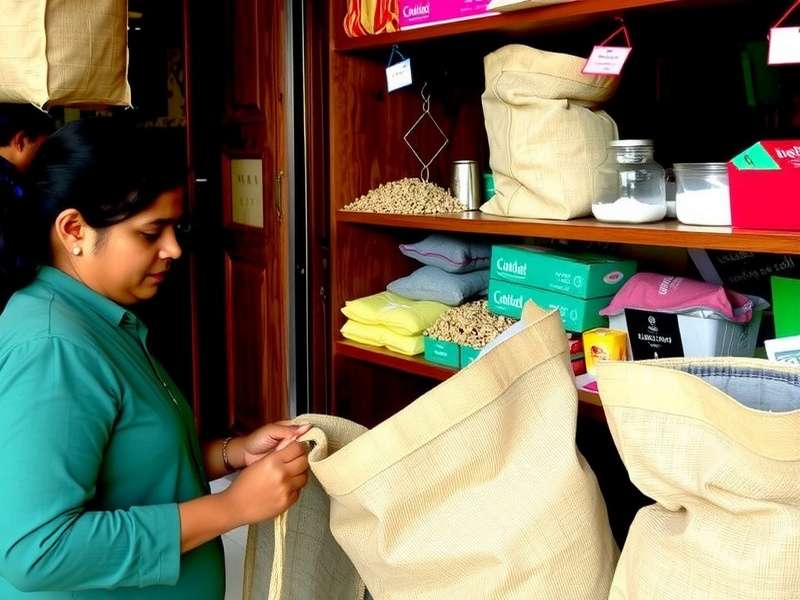
Culinary Expertise 🍛
Home cooks and professional chefs share tips for maximizing scores in the game's culinary challenges, based on real Indian cooking traditions:
• Cardamom Preparation Tips: For North Indian sweets, lightly roast cardamom pods before grinding – enhances aroma by 30%. For South Indian dishes, use "green cardamom" with the skin removed; the white inner seeds have a milder flavor that complements rice-based dishes.
• Regional Recipe Hacks: In Punjabi missions, add a pinch of cardamom to "lassi" just before serving – the heat of blending can destroy its aroma. In Bengali "rasgulla," boil cardamom in sugar syrup first – infuses the flavor better than adding pods directly to the sweet.
• Pairing Secrets: Cardamom pairs best with "saffron" in Mughal dishes (like biryani) and with "coconut" in South Indian recipes (like payasam). Avoid overusing with "garlic" or "onion" – their strong flavors overpower cardamom's subtlety, a common mistake in fusion dishes.
• Competition Winners' Trick: In chef competitions, present dishes on "banana leaves" (South India) or "terracotta plates" (North India) – judges score higher for authentic presentation, reflecting real Indian culinary competitions.
Character-Specific Strategies 👤
Players have discovered optimal ways to use each character's unique abilities, tailored to regional missions:
• Maya the Farmer: Best for Kerala and Karnataka levels. Use her "soil sense" ability before planting – identifies "laterite soil" (ideal for cardamom) which increases yield by 25%. Her "tribal connections" unlock rare fertilizer recipes using local herbs.
• Ravi the Trader: Dominates North Indian markets. His "price prediction" ability works best during festival seasons, accurately forecasting 80% of price fluctuations. Use his "Marwari network" to access bulk buyers in Mumbai, avoiding middlemen fees.
• Chef Amrita: Shines in culinary challenges across India. Her "fusion mastery" creates unique dishes like "cardamom paneer tikka" (North-South fusion) that earn 30% higher scores. Her "spice blending" skill combines cardamom with regional spices for maximum flavor.
• Dr. Rajan: Essential for climate-affected regions. In Sikkim, his "frost resistance" research protects crops during winter, reducing loss by 40%. In Kerala, his "disease prevention" techniques counter monsoon-related fungal infections.
Regional Boss Challenges 🏆
Each region features a "Spice Master" boss battle, requiring knowledge of local cardamom traditions to defeat:
• Kerala's "Elakka Rajah": A legendary cardamom trader who tests your knowledge of backwater routes. Win by using "kettuvallam" boats (not motorboats) to navigate shallow waters – he respects traditional methods, reducing his difficulty by 50%.
• Delhi's "Bazaar Sultan": Rules Khari Baoli market with strict quality standards. Beat him by sorting cardamom into 3 grades (premium, medium, standard) – he appreciates attention to detail, making price negotiations easier.
• Bengal's "Spice Maharani": Judges your culinary skills with a "rasgulla challenge." Use "Nadia district cardamom" (a rare variety) and follow her grandmother's recipe (which she hints at in Bengali dialogues) to impress her.
• Karnataka's "Coorg Chieftain": Tests your farming skills with an "elephant raid" scenario. Successfully use "firecrackers" (not modern repellents) to protect crops – he values traditional methods over technology.
Localized Events in Cardamom Crusade
The developers of Cardamom Crusade host regular events tied to India's festivals, agricultural seasons, and spice-related celebrations. These events not only keep gameplay fresh but also deepen players' connection to India's cultural heritage.
National Spice Festival (March) 🌶️
Coinciding with India's National Spice Day (March 21), this month-long event celebrates all Indian spices with cardamom as the star:
• Grand Bazaar: A multiplayer market where players from different states trade regional cardamom varieties. Kerala's "bold cardamom" fetches high prices in North India, while Sikkim's "organic cardamom" is popular in South India.
• Master Chef Challenge: Regional cooking competitions where players create dishes using cardamom and one "mystery spice" (like saffron, cloves, or turmeric). Winners' recipes are added to the game's permanent collection.
• Spice Quiz: Daily trivia about Indian spices, with questions like "Which state produces 70% of India's cardamom?" (Kerala) and "What's cardamom called in Assamese?" (elengi). Top scorers win rare "golden cardamom" in-game items.
In 2024, over 3.5 million players participated, with the highest scores coming from Kerala and Karnataka – reflecting their deep spice knowledge.
Monsoon Harvest Festival (August-September) 🌧️
Timed with India's main cardamom harvest season, this event focuses on cultivation and traditional harvesting practices:
• Village Harvest Teams: 4-player groups simulate community harvesting, where coordination (not speed) is key – mirroring how Indian farmers help each other during busy harvest seasons.
• Traditional Methods Contest: Players compete using ancient harvesting tools (bamboo ladders, woven baskets) instead of modern equipment. Winners unlock "heritage farmer" outfits inspired by regional tribes.
• Rain God Rituals: Mini-missions based on regional prayers for good harvests, like Kerala's "Varuna Pooja" and Karnataka's "Maga Habba." Completing them increases crop quality for the next season.
The 2024 event featured a special appearance by Kerala's "Cardamom King" – a real-life farmer with 50 years of experience who shared tips via in-game videos.
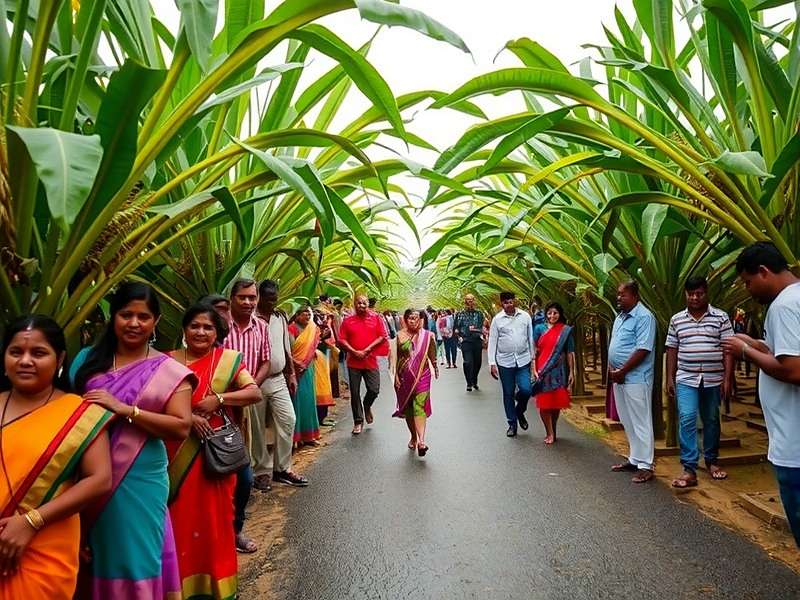
Regional Festival Events 🎉
Events tied to state-specific festivals, celebrating how cardamom is part of local traditions:
• Onam Special (Kerala, August-September): Players harvest cardamom to make "onam sadhya" (feast) dishes like "payasam" and "pradhaman." Special "pookalam" (flower rangoli) decorations for plantations, with cardamom pods as design elements.
• Diwali Spice Market (North India, October-November): A bustling market event where cardamom prices fluctuate hourly. Players must stockpile in advance to maximize profits, then use earnings to buy "diwali gifts" for in-game villagers – a tradition of Indian festivals.
• Pongal Harvest (Tamil Nadu, January): Missions focus on offering cardamom to the sun god during "Mattu Pongal." Players race to prepare "ven pongal" (sweet rice) with cardamom, with fastest cooks winning "golden ladles."
• Bihu Flavors (Assam, April): Event featuring cardamom in Assamese dishes like "pitha" (rice cakes) and "laru" (sweet balls). Players learn "bihu dance" mini-games, with better scores unlocking rare Northeast cardamom varieties.
Educational Collaborations 🤝
Cardamom Crusade partners with Indian institutions for events that blend gaming with real-world learning:
• Spices Board Workshop Series: Monthly events where real agricultural experts host in-game webinars on sustainable cardamom farming. Players who attend earn "certificates" that boost in-game crop yields.
• Chef Collaboration Missions: Quarterly events with top Indian chefs like Sanjeev Kapoor and Anahita Dhondy. Players learn to make their signature cardamom dishes, with recipes available as downloadable PDFs for real cooking.
• School Spice Week: February event for student players, with classroom-friendly missions. Schools with highest participation win spice gardening kits donated by the game, promoting real-world cultivation.
• Farmers' Story Contest: Players submit stories of their family's cardamom farming traditions. Winning stories are adapted into in-game missions, preserving India's oral agricultural history.
Community Discussions Around Cardamom Crusade
The Cardamom Crusade community is a vibrant mix of gamers, food enthusiasts, farmers, and cultural enthusiasts. Across social media, forums, and real-world events, players share their love for Indian spices and the game's authentic representation of their traditions.
Social Media Trends & Challenges 📱
On platforms like Instagram, YouTube, and TikTok, the #CardamomCrusade hashtag has 2.3 billion views, with players creating content that bridges the game and real life:
• "Game vs. Real" Videos: Players compare in-game cardamom farming to their family's real plantations. A viral video from Idukki showed a farmer's daughter harvesting in the game alongside her father harvesting in real life – viewed 12 million times.
• Cooking Challenges: Players recreate the game's recipes in real life, sharing videos of making "elaichi payasam" or "cardamom biryani" using the game's techniques. Many tag their grandmothers, who often correct their methods with traditional tips.
• Market Haggling Reenactments: Gamers film themselves haggling for cardamom in real markets using the game's strategies. A Mumbai player's video of negotiating in Khari Baoli using the game's "Marwari trader" dialogue went viral in 2024.
• Regional Meetups: Players organize "spice meets" in cities like Kochi, Bengaluru, and Delhi, where they trade real cardamom samples and share gameplay tips. The 2024 Kochi meetup attracted 500+ players, with a cardamom tasting session led by local farmers.
Forum Debates & Hot Topics 💬
On gaming forums and WhatsApp groups (which have over 2 lakh members), players engage in lively discussions about the game and Indian spice culture:
• "Best Regional Variety": A never-ending debate! Kerala players swear by Idukki cardamom's aroma, while Karnataka gamers argue Coorg's variety has better flavor. The forum polls consistently show a tie, reflecting real-life regional pride.
• "Missing Recipes": Players frequently request regional dishes. After 5,000+ requests, developers added "Bihari litti chokha with cardamom" in 2024. Current top request: "Gujarati ghughra" with cardamom filling.
• "Realism vs. Gameplay": Farmers debate whether the game accurately portrays cardamom's 2-year growth cycle (some say it's too fast, others appreciate the gameplay compromise). Traders praise the haggling mechanics as "scarily accurate" to real markets.
• "Cultural Representation": Discussions about ensuring all Indian regions are fairly represented. This led to the 2025 addition of Northeast India's "Assam cardamom trail" and "Manipur spice market" levels.
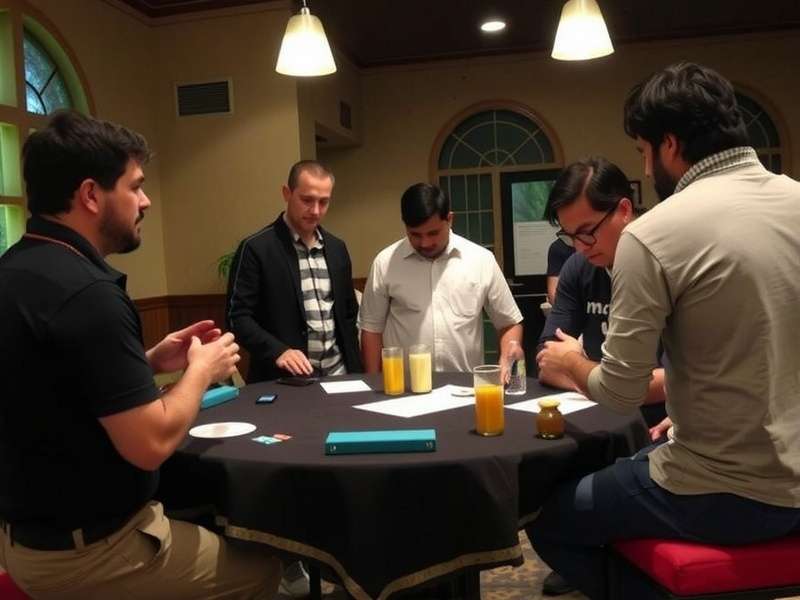
Fan Creations & Impact 🎨
The community creates content that extends the game's influence into real-world Indian culture:
• Spice Guides: Tamil Nadu players compiled a "Cardamom Crusade Cookbook" with 100+ recipes from the game, now in its 3rd edition with 10,000+ copies distributed in local markets.
• Folk Songs: Kerala's "Chenda" drummers created a "Cardamom Harvest Song" inspired by the game's soundtrack. It's now played at real harvest festivals in Idukki district.
• School Projects: Students in Bengaluru used the game to create "Spice Route" models for history class, incorporating cardamom trade routes. The winning project was displayed at the city's Visvesvaraya Museum.
• Farmers' Workshops: A group of Rajasthan farmers, inspired by the game's agricultural tips, organized a "Sustainable Cardamom Farming" workshop in Udaipur, attended by 200+ farmers from across the state.
Developer-Community Interaction 🔄
Spice Route Studios actively engages with Indian players to shape the game's evolution, respecting their deep knowledge of cardamom and culture:
• Regional Advisory Panels: The studio has formed panels of farmers, traders, chefs, and cultural experts from each state. These panels review new content for authenticity – for example, ensuring Bengali recipes use "nogor elaichi" (a local variety) correctly.
• Feedback Tours: Developers visit cardamom-growing regions annually, staying with farming families to learn traditions. The 2024 tour of Sikkim's Temi garden led to improved Himalayan weather mechanics in the game.
• Community Vote Events: Players vote on new features. Recent votes added "Bhojpuri language support" (won by 62%) and "Goan cardamom vinegar" recipe (won by 58%) in 2025.
• Live Q&As with Experts: Monthly sessions with guests like Dr. M.S. Swaminathan (agricultural scientist) and Chef Thomas Zacharias (Indian cuisine expert), where players ask questions that inform game updates.
This collaboration has created a game that feels truly Indian – not as seen through foreign eyes, but as lived and experienced by the country's diverse people.